
Robert-Jan Broer is not from Bienne, but he’s been here many times. The founder of the acclaimed online Fratello Watches is a well-known Speedmaster collector, a collection he started as a student by selling his car. His passion for Omega, a brand in his family since dating back to his great-grandfather gifted, is highly communicative, influencing collectors and enthusiasts around the world. Robert-Jan started the whole #SpeedyTuesday thing, leading to two iconic limited edition Speedmasters. Other Bienne brands, in particular Swatch, Hamilton and of course Rolex, are also frequently seen on his wrist. As such, Robert-Jan is an honorary citizen of the Bienne watch scene, and it’s a privilege to be chatting with him today.
Do you remember your first visit to Bienne? Can you tell us about it?
My first visit to Bienne was about ten years ago, in 2010 or 2011. It was for Omega. They’d invited me and some other digital publications such as Hodinkee or Ablogtowatch. We toured the Omega headquarters. They showed us the manufacture. I remember particularly the tourbillon workshop, which back then was in the old building. But what struck me the most was the museum. I was amazed seeing the archives.
For Omega, it was their first such opening up to digital journalists. Actually, it was the first big brand that reached out to this new channel called “the Internet”. They saw the potential. From then on, we always stayed in touch.
At the time, I didn’t see much of Bienne. Everything was focused around Omega HQ and the museum. What I did see reminded me of a smaller version of Basel. A nice city centre but very industrial. You can see the working spirit.
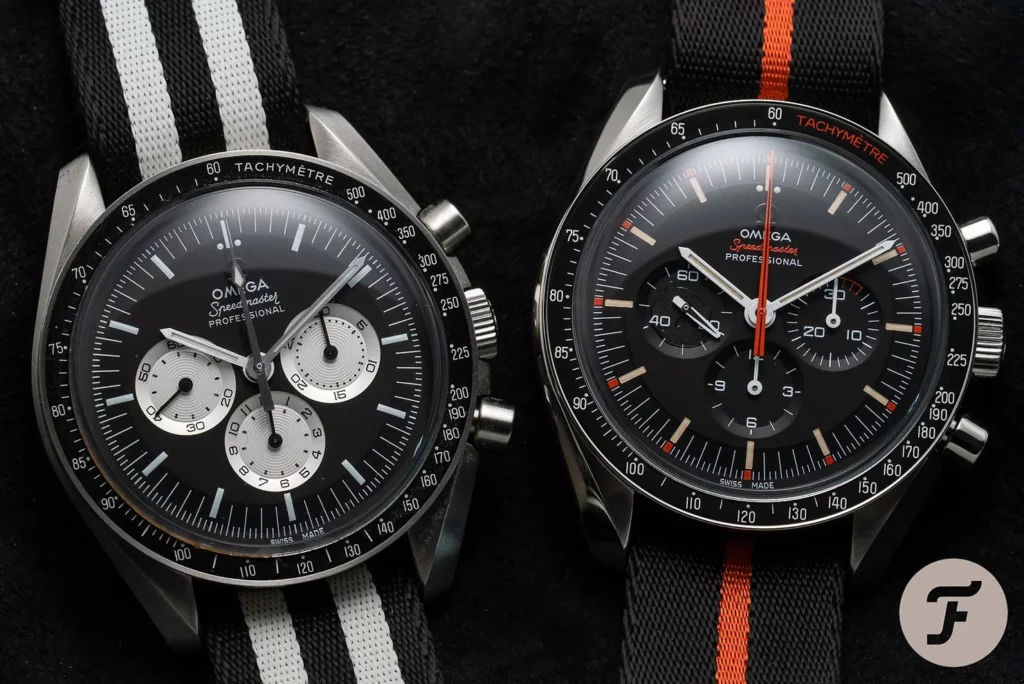
The 2017 (left) and 2019 Speedy Tuesday limited editions
Do you have any favorite hangouts here? A bar or restaurant for instance?
In terms of eating, I really enjoyed a dinner organized at Le Perroquet Vert. I also very much liked the Osteria, in the Elite hotel. The bar across the street I also found nice.
La Rotonde ?
Yes, that’s the one. And on a trip for another brand, I discovered the old town, near an old Rolex building, mountain-side. There was a restaurant, at a square plaza. The place had a latin vibe to it, perhaps Spanish or Latin American, but served Schnitzel. A very interesting combination.
There’s another restaurant I really liked last time I came, Palace. It was very nice. A more casual side on the left, and a more chic one on the right. I have been to both, and really enjoyed it.
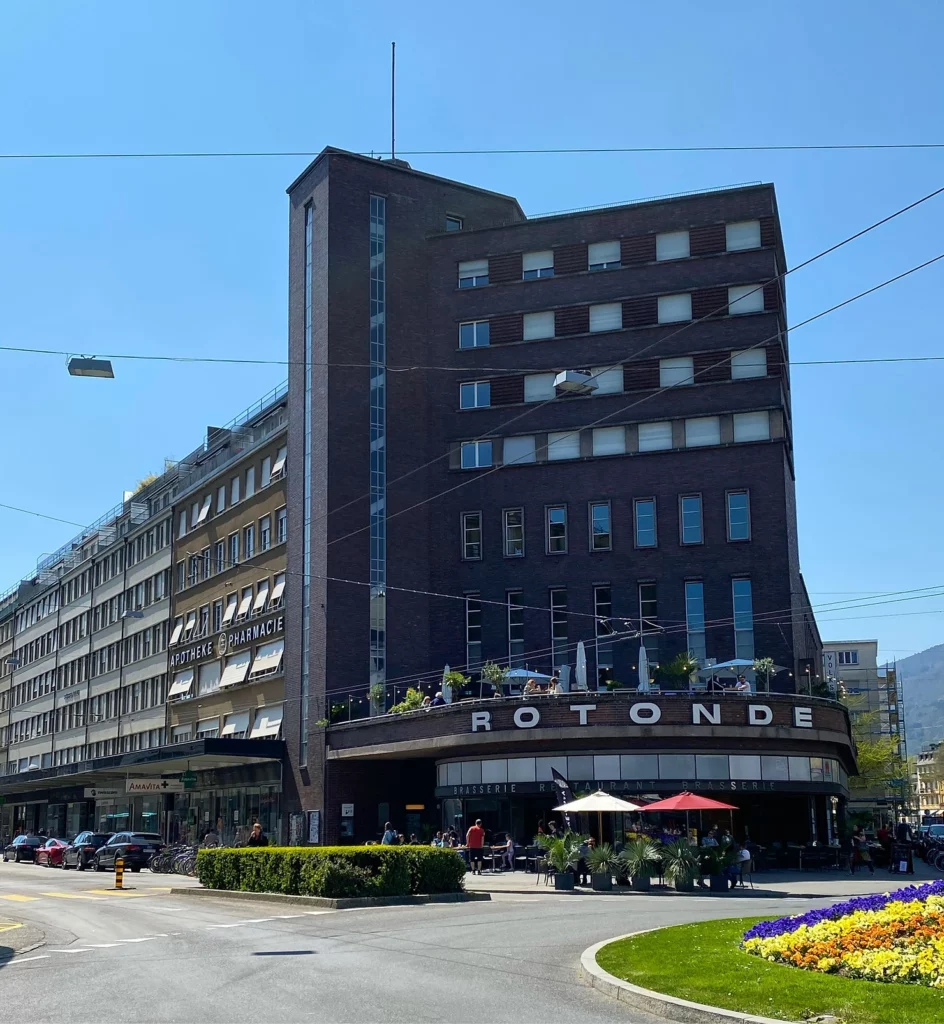
La Rotonde, one of Robert-Jan’s go-to places in our town
Bienne, Biel in German, is Switzerland’s largest bilingual city. Many other languages are heard around the town as well. You are Dutch, grew up near the German border, you publish in English a site with an Italian name and work closely with mostly French-speaking brands. How many languages do you speak? What role have languages played in your personal and professional life?
Unfortunately I don’t speak that many languages. English and Dutch are the ones I use the most. Our office is in The Hague and many of the employees or contributors are from outside the Netherlands. So on the floor and for internal communications, English is the language.
I can speak German a little bit. I learned it in school. But also, from watching television, because when I grew up, we only had two Dutch TV channels and three German TV channels. So, my German is very limited. It’s a bit « television German » I would say. German and Dutch are similar languages. The pronunciation is very different, but I can say a word in Dutch and my German colleagues will understand. Also, German grammar is a lot more complex, which I think also explains why English is so much more popular in the Netherlands.
I don’t speak French. I just understand a few words. It all depends on how fast someone speaks. I should have done better on that in school! And now it feels like too late to learn. I do have to say that for the many watch brands in French-speaking areas of Switzerland, the PR and marketing people all speak English. But when you visit the manufacture, and meet the watchmakers, often they don’t. In that sense, French would have been useful. Fortunately though we always found someone to help translate.
It’s something I enjoy in Bienne, that I can get around in German or English, despite not speaking French. This is surely not the case in all places I visit in Switzerland.
Bienne hosts the Cité du Temps, where the Omega and Swatch museums are located. Other fantastic museums are not far, whether Patek Philippe’s in Geneva or the Musée International d’Horlogerie in La Chaux-de-Fonds. But very few brands truly open their doors to the public. Zenith is a rare exception. What is your take on “watch tourism”? Do you think more could be done to favor it, whether virtually or, after the pandemic, in real life? Is this something you could imagine Fratello expanding into one day?
I have been to a few museums in Switzerland. Audemars Piguet, Patek Philippe, TAG Heuer, Longines, they all have wonderful museums. However, I think the best brand museum I’ve come across is the one by Omega in Bienne.
What I notice is that you often can go there, as a collector or enthusiast. It’s more open than one would think. The brands often just are not used to it, or don’t have the capacity to guide. But it’s not unwillingness. I feel they should advertise it a little bit more to give more exposure to the opportunity.
Does Fratello have a role in that? We did some tours in the past, with our readers. Also, Ebner, which owned Fratello up until 2018, did some multi-brand tours for their readers.
What we are doing now is brand-specific experiences. We had for instance ten readers selected to visit the Grand Seiko manufacture in Japan. We have done events with Omega, Oris, Blancpain, Glashütte Original, etc. I think those are more interesting for us because they are focused on just one brand. Typically, I find people join such events because they are interested in just one brand. That makes the events very intense, and interesting.
Visiting 8 brands in 3 days is a different experience. I prefer a more immersive tour, for a deeper experience. And this means focusing on a single brand at a time.
In terms of organizing virtual events… I am very opinionated about this. A virtual museum tour, or factory tour… I think each tour is about the connection with the people of the brand. Today, many people have Zoom fatigue. Brands leaned heavily into virtual events during the heart of the pandemic. Now, I am so happy to be able to travel and see the people, and the watches, in the flesh. Otherwise, the emotional aspect is lost.
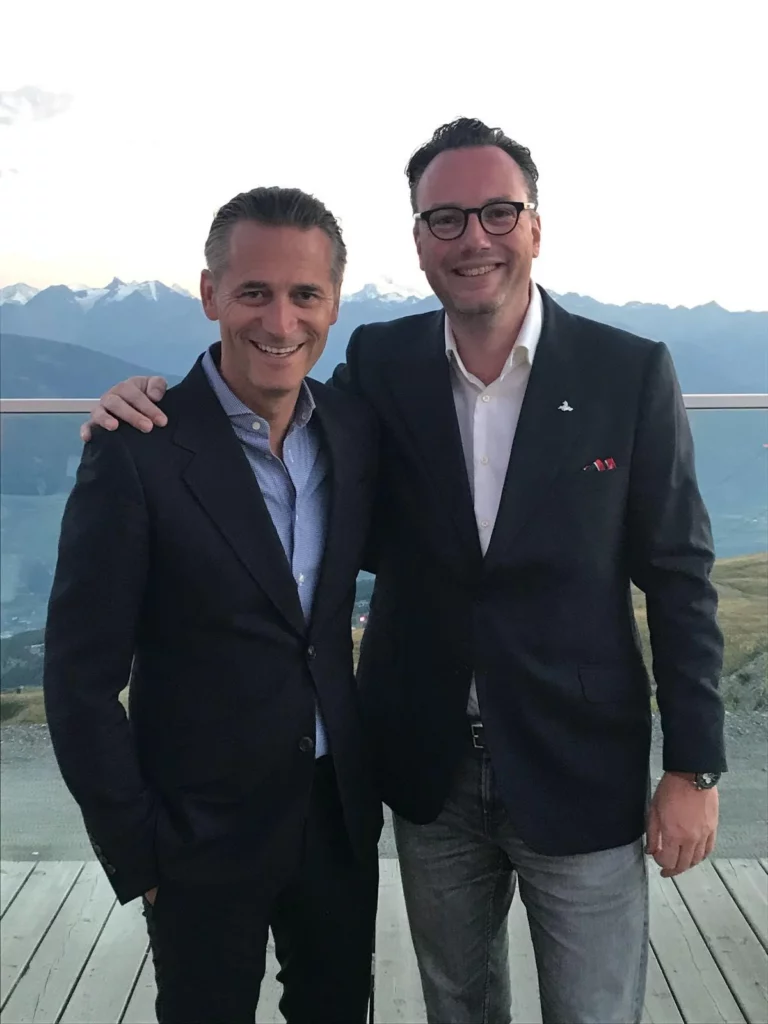
Robjert-Jan Broer with Omega CEO Raynald Aeschlimann
Another language-related question (the topic matters a lot here, as you may have guessed)… As the leading European online watch publication, have you ever considered publishing Fratello in languages other than English?
We had a German version up until quite recently, as a trial. We had asked ourselves: should we deploy Fratello into different languages? It could be an easy win, multiplying our traffic on the website. Well, it does not work that way.
We needed an agency. Machine translation does not suffice. There is a cost to that, of about 0.12 euros per word for French or German. Into Japanese or Chinese, it’s more than double that. But the costs are not the main issue.
We decided to make the investment, starting with German. We could not translate everything because it takes time. We did it in batches. As a result, the articles appeared one to two weeks later. The feedback we got from users was: why are you translating into German? We understand English. Also, why are those articles we have already read?
More generally, beyond the technical challenges of watchmaking linguo, we realized that our specific tone of voice, which is critical to express our true opinion, does not translate easily. This is especially the case if done by a third-party agency.
Some markets may make more sense than others. For instance Chinese or Japanese. But it would require someone truly local, working very closely with us.
We haven’t given up, it’s a continuous discussion for us. But it’s difficult. We will happily invest if and when we find the right way to do it.
Fratello’s collaboration with Omega has reached the status of business case study and no longer needs any introduction. You also distribute a selection of Hamilton models on the site now. Can we expect future collaborations with other Bienne brands?
What we did with Hamilton, and others such as Rado and Fortis, has been interesting. We wanted to distribute their watches. But, especially if we are going to sell at full retail price, what added value do we have to offer? Online is often an impersonal experience. Those attempts gave us the insight to decide we did not want to go further in the direction of just being retailers. Others are better equipped to do this right.
We are much better positioned to do something unique with the brands. Other than Speedy Tuesday, we recently did a unique collaboration with Nomos, before that with Czapek. We also did two pre-sales with Seiko. Those were all hugely successful. We also did a collaboration with another brand from Bienne: Minase. They’re Japanese but have an office in Bienne. We did ten special watches with special dials. Very beautiful. In those exclusive collaborations, we can offer something really special, tailored to what is meaningful to our audience.
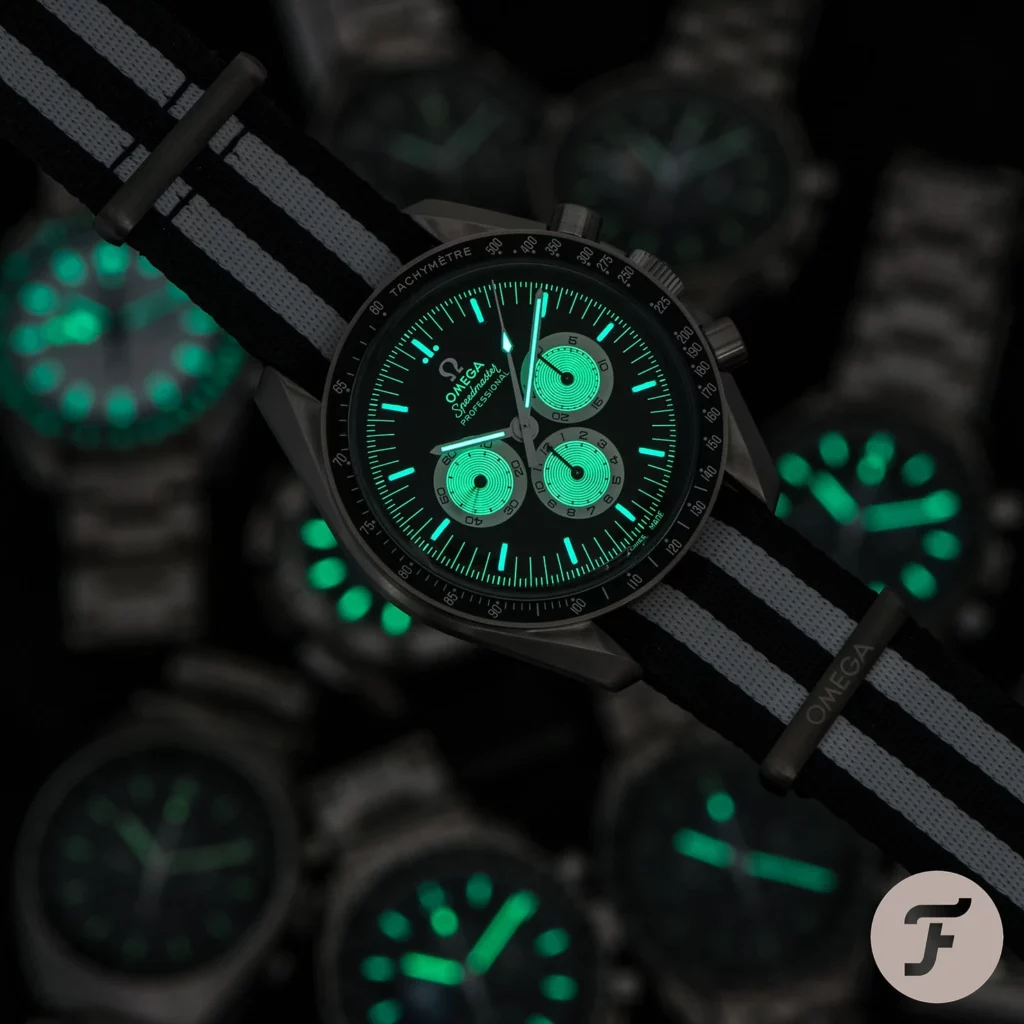
The 2017 Speedy Tuesday with its characteristic luminous radial dial
Now moving to a slightly more personal side of the discussion… There is another big brand in Bienne that is often compared to Omega… Sure, its HQ is in Geneva, but its largest production site, and where all its movements are made, are right here in Bienne. As a watch enthusiast, your relationship with Rolex can remind one of the status formerly often seen on Facebook: “it’s complicated.” In interviews, you say you still own pieces, but rarely wear them (and indeed, they are nowhere to be seen on your Instagram publications). And yet, you generally advocate for not just keeping watches in a safe… Is your frustration solely about the retail situation? Or is there something deeper, beyond, that makes you not connect to the brand so much?
I do connect with Rolex, and its watches. And I have a good relationship with the brand, as with Tudor. We do sometimes want to press a little bit where it hurts. Rolex gave us some insights as to why they are unable to meet demand.
I have a lot of friends who want to buy Rolex to wear the watch and just can’t. But I also know that a lot of flippers today, if given the opportunity to buy a Datejust that no one wanted just a couple years ago, will make one or two thousand euros just walking out of the store.
It’s not always fair to bash on Rolex. What I don’t like is not Rolex but the dealerships that cater to those flippers. It’s also some of the authorized dealers themselves who play tricks, opening up more or less anonymous accounts on online marketplaces. This is very damaging to a brand like Rolex. A customer should always have the AD as the trusted source. When the AD becomes part of the grey market, you can no longer trust them anymore. This also applies to some specific Patek and AP models. But for Rolex it’s basically about all models, except for Cellini.
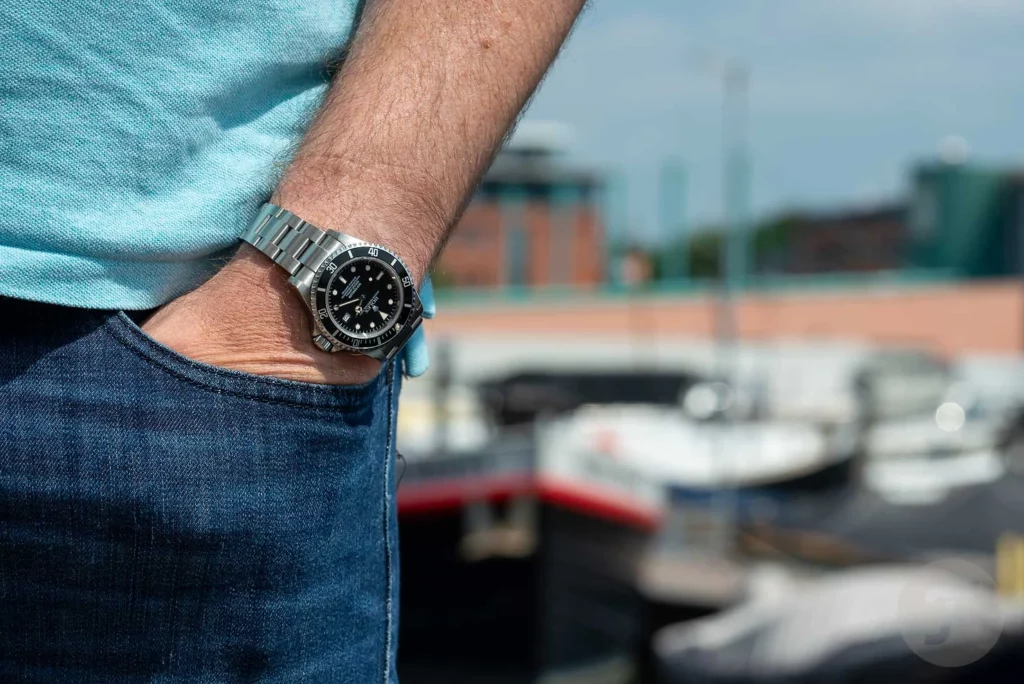
Robert-Jan does indeed give wrist time to the Crown
Back to a watch we know you love… More specifically, let’s talk about its complication, the chronograph. Do you actually use the chronograph on a regular basis? If so, what are your typical use cases?
Actually I don’t! Sometimes I use it for a trip, how long it takes to get from point A to point B. I also remember once when I had a new espresso machine, a manual one. And to make a proper espresso, time is of the essence.
My wife, though, often wears Speedmasters and uses the chronographe more than I do. She likes to cook and uses the chronographe to keep track of things in the kitchen. A timer would be ideal, but she does find it handy.
Now about a much less common complication: you often mention sleepless nights before a big watch collaboration launch… The most obvious complication that comes to mind here is the alarm. No such watch is to be seen in your collection on Instagram, at least in its mechanical form. Actually, no Bienne brand has any recent model with a mechanical alarm. What is your take on this complication? Is it doomed to stay niche now that people have smartphones or do you think it has a brighter future?
I like the Memovox, it’s a beautiful watch. But otherwise, for me, the alarm is one of the most uninteresting complications. You don’t really use it during the day, as the environment is often too loud for a notification. It’s also quite a hassle to set. And personally, I don’t like an alarm in the morning. I use the most pleasant melody on my phone.
I also have memories of vacation at my grandparents’ in the eighties. They had a mechanical alarm and it made an awful sound. I don’t want to be awakened by that kind of noise!
I do like the idea of the alarm complication, I think it’s cool. I had a Seiko Bell-Matic for some time. If I wanted to have one it would be a Memovox. Great history and very interesting models, both vintage and current.
There are a lot of complications that I don’t find that interesting to be honest. Alarm is one of them. Even the date, in my view, takes up a lot of space on the dial for something that only changes once a day. I can get that information in the morning from my iPhone.
You recently shared that you have a certain skill for drawing… Do you draw watches? Is designing a watch something you would want to do one day?
When we make a design proposal in collaborations, like Speedy Tuesday, the canvas is already there. But designing a watch from scratch is not for me. I’m not a watch designer. I drew a lot when I was a kid and a teenager. But now all I draw is funny animals for my daughter. Mainly rabbits and ducks.
When I was much younger, I was really into portraits, took courses etc. But then I just fell out of it, as other interests took over. If I practiced a lot again, I think I could probably make some nice drawings. But not watches.
You discuss the financial aspect of your watch collection very openly. Selling this to obtain that, a certain watch being out of range, etc. This is somewhat unusual, and refreshing, especially in a world where many still, unfortunately, consider watches as status symbols. Some amounts, such as in recent auctions, can also appear ethically debatable. That said, living in Bienne, we witness watches as a creator of employment and fiscal revenue. They are an economic necessity. You also make a living from watches and now employ others who do the same. How do you look at the complex relationship between watches and money?
I think it’s almost impossible to see watches and money separately. First, let me just say: I am not a big seller of watches that I have. I am a holder. I used to sell in the past to finance the next watch.
Often it’s more about the journey than the ownership, and making a true opinion for yourself. For instance, I used to have a huge craving for the Daytona. I thought it was *the* watch. And then when I owned it, I thought it’s not my watch at all. The design is too cluttered, the sub-dials don’t work for me.. And then you sell it and go to the next one. Trading watches is more of a tool to get to the next thing than it is about owning the watches.
I have now reached a stage where I am very much at ease with my collection. There’s nothing I really want to own. It’s a luxury, I am conscious of that. And of course, the Speedy Tuesday watches are a dream come true. Our own Speedmasters, what more could you wish for?
For the gold Speedmaster I am wearing now, I had to sacrifice another watch, and that’s fine. I know what it was like to own it. If you’re a collector, trading up is part of the journey.
I am not in the game where people spend hundreds of thousands or even a million on a watch. That is for the very lucky few. I have no problem with that, but what is more bothering is the transparency nowadays. You are no longer wearing a watch but rather a price tag.
Generally speaking, people are increasingly obsessed with this. Wearing a watch can be like being a walking Excel spreadsheet. The investment in a watch should not be a financial one. It’s an investment in joy. Enjoying the craftsmanship that people in Bienne or elsewhere put in that watch, whether it’s a Hamilton, Omega or Armin Storm.
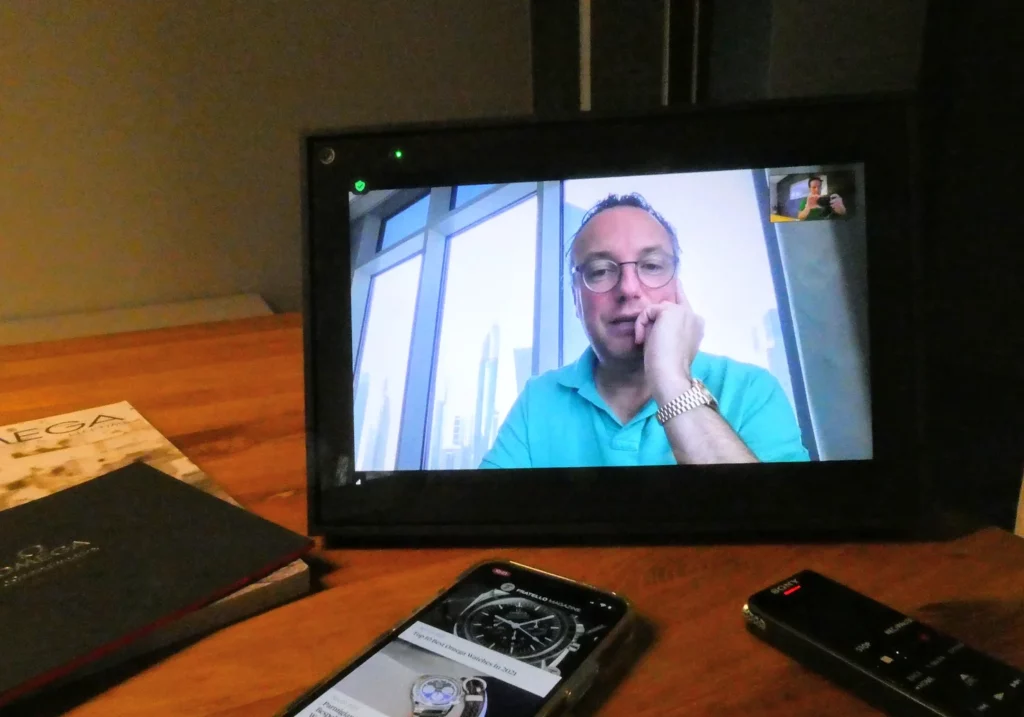
The virtual discussion with Robert-Jan while he was in Dubai (as you may recognize from his background)
Made in Bienne was started during lockdown. Initially as a means to keep the kids busy (although they ended up not helping that much…). Beyond the initial hit on sales, how do you see the impact of the pandemic on the watch industry? What do you think it will change for its long term future?
You mention a hit on sales. For us, during the pandemic, we had our largest growth ever. At the beginning, there was a dip, as people were focused on pandemic news. But then, we really saw a peak. Before the pandemic, we would go to the big brands for advertising opportunities. During the pandemic, it was the other way around. They came to us. As sad as this may be, of course, we did gain during the period.
For retailers, in particular independent ones, it was very difficult. Many such stores never really embraced online. Obviously sometimes the brands didn’t allow it. A lot of the traditional stores had a good time for many decades, but many missed out on the digital era. Some were used to selling to the same families, from generation to generation. But many consumers today do not operate that way anymore. They can’t be taken for granted. Also, for those who were heavily dependent on Asian tourists, this period must have been particularly tough.
Some retailers, of course, did manage to do well, especially the ones who were already invested in digital. They gained from people not being able to spend their money in retail, but also having more purchasing power, from their unspent holiday allowance, for instance.
Finally, you are renowned for your openness and availability. It is always surprising to see all your answers to comments on Fratello or Instagram. You very kindly accepting this interview is another example. How important is this to you? And how do you manage it with everything else going on in your personal and professional life?
Being accessible and responding to everyone is not always possible, as it’s a lot. I get reached out to from many sides, WhatsApp, email, SMS, Instagram. But I do my best because I think it’s important.
When I started myself, I reached out to people such as the late Chuck Maddox. They really took the time to answer questions, have discussions, even if I was on the other side of the world.
Passion for watches is a people thing. It’s about connecting with other people, and that’s what I really enjoy. I love to hear stories about how people got into watches, or the special watches that they have.
I look at Fratello traffic very closely. The most fun articles for us to write are personal stories, for instance, how we got into watches or why we decided to buy or not to buy a certain watch. And those are actually the most read articles on the site. Every time. Sometimes we do such articles about readers and their own watch stories. Those are also always very popular. I often go up to people and ask about their watch, sometimes in the street. Especially with Speedmasters, there’s often very personal and interesting stories. I really enjoy that.
Spending time not just with brands, but also collectors, the community, being able to spend two hours doing this interview, for instance, those are not easy to all fit in but it’s important for me, and for Fratello. We need to be in touch with all the parts of the watch world, and that obviously includes our audience. It’s my role to do that, and I enjoy doing it. I feel it’s time well spent.
But it’s not easy to find the right balance. My wife is very understanding, and puts up with it, within reason. But my daughter should not have to understand. And so I do my very best for her to be preserved from this, for instance, by reducing travel. Bringing her to school, picking her up, or taking her to play hockey: those are things that are essential to me.
Fortunately, now, with Fratello, I have realized you cannot do everything yourself. I used to do absolutely everything on my own, from developing the website to going to the post office. Now, we have a CEO, running operations, fifteen skilled people working for the site, and contractors. This has been great in order to accelerate our growth but also for my family life. I am much more at ease and relaxed than before.
Photos courtesy of Fratello watches



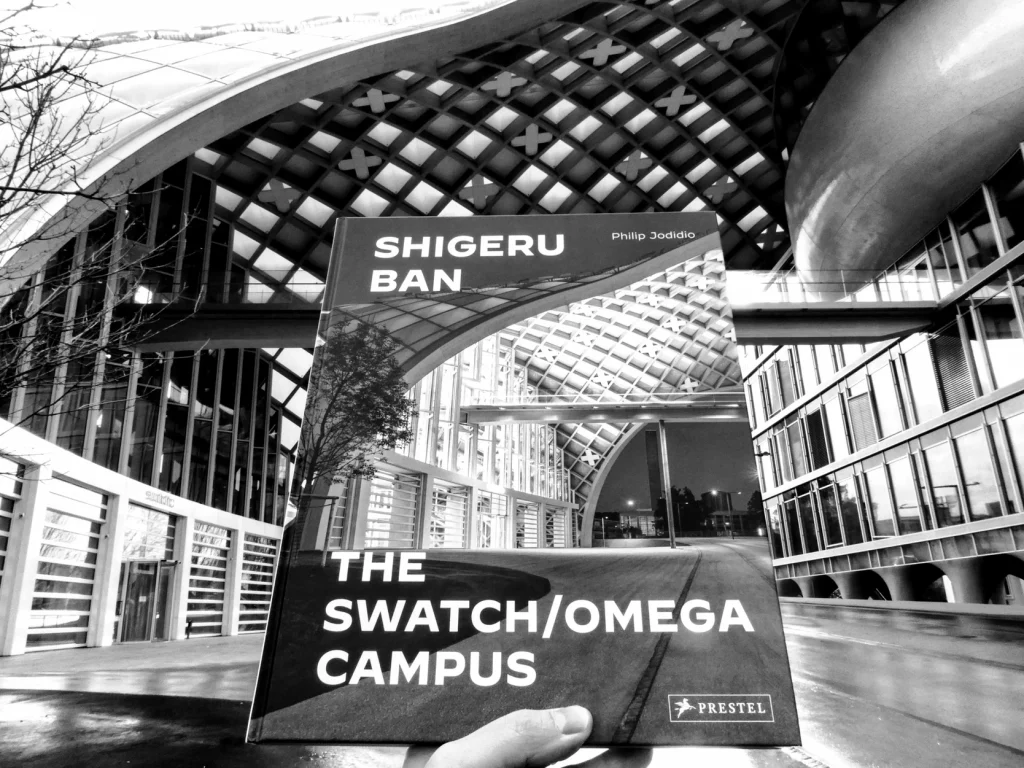
I really enjoyed reading this article, thank you so much! It’s great and full of thoughtful insights. Congrats for the interview with such a special guest and I really look forward to a new article on this new series of “Bienne Makers”!
Merci beaucoup pour cet entretien, la précision des questions et la qualité des réponses ! C’est passionnant. C’est du Made in Bienne 🙂
Vivement le prochain !
I’m a complete watch novice but really enjoyed this interview. Accessible and an interesting insight into the complexities and nuances of the watch world!
Like Reply
What a lovely interview! A lot of very interesting insights (and healthy criticisms on some ‘dark’ aspects of the industry). I had the pleasure to meet RJ at Baselworld a few years ago and it was great chatting with him. With this interview, he confirms himself as one of the best people in this business!
Also, congrats to MIB on this new series! Really looking forward to more content!
Loved it. Extensive interview with details on both Robert-Jan and Bienne which might be the next city to visit for watch enthusiasts.
Amazing interview! Congrats.
The kind of extensive interview in enjoy in the watch world, thanks!